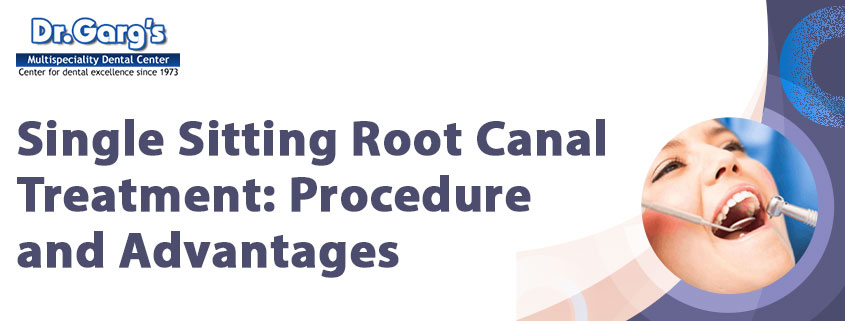Single Sitting Root Canal Treatment: Procedure and Advantages
Root Canal Treatment is a very common dental procedure performed to relieve a tooth of infection/pain or both. The procedure aims to save a tooth which otherwise would have to be taken out.
Indications for root canal treatment
- A tooth affected by deep cavity reaching up to the dental pulp
- A fractured tooth with the fracture reaching the dental pulp
- An avulsed tooth
- A tooth with extreme sensitivity to hot /cold
- A Tooth with an abscess
Root Canal Treatment Procedure
The treatment is usually carried out under local anesthesia unless the tooth is already dead.
A small hole is drilled in the tooth to access the nerves inside the tooth.
The nerve canals are traced and the nerves are taken out by special instruments.
The nerve canals are then thoroughly cleaned, shaped and irrigated to remove any nerve remnant and shaped in the form of a funnel.
An inert filling material is then placed in the prepared canals.
What to expect after a RCT
- If local anesthesia has been used the area may remain numb for 2-3 hours.
- The pain is immediately gone.
- The tooth might feel tender or unable to take chewing load for 3-5 days.
Single sitting RCT
There was a time when a root canals needed multiple sittings spanning over weeks. However today, most root canals are performed as a single sitting procedure of just 30-45 minutes. The procedure has many many advantages
- The procedure is time saving for both the dentist and the patient.
- The patient does not need to go through the discomfort of local anesthesia at every sitting.
- Post-operative pain and other complications are very limited.




Leave a Reply
Want to join the discussion?Feel free to contribute!